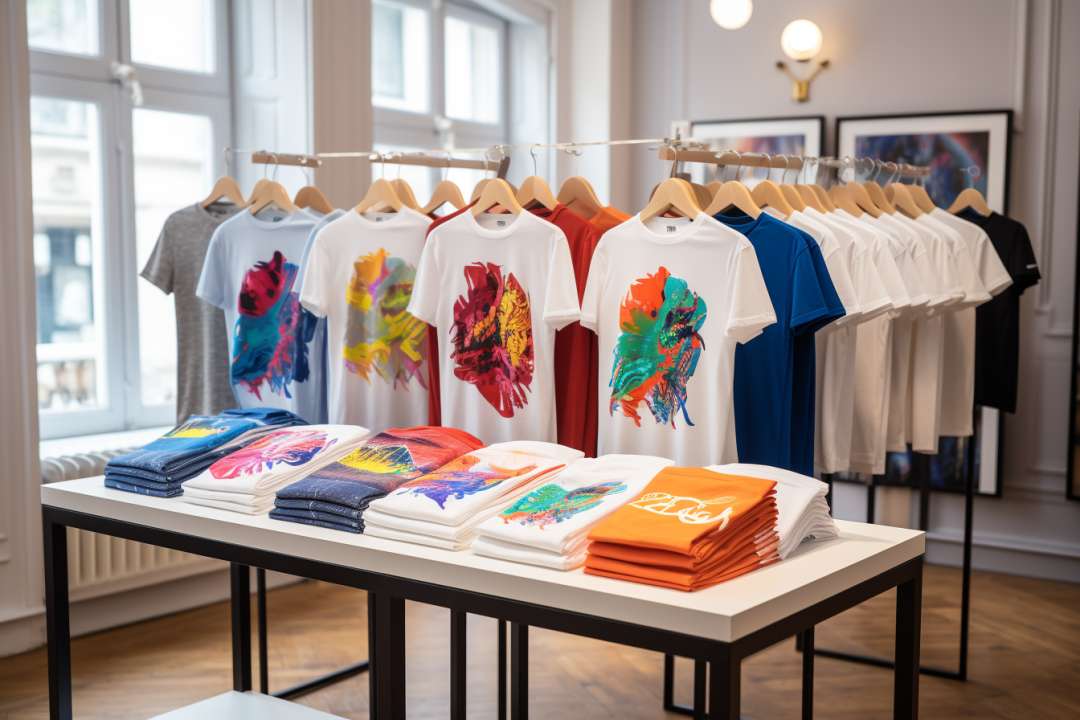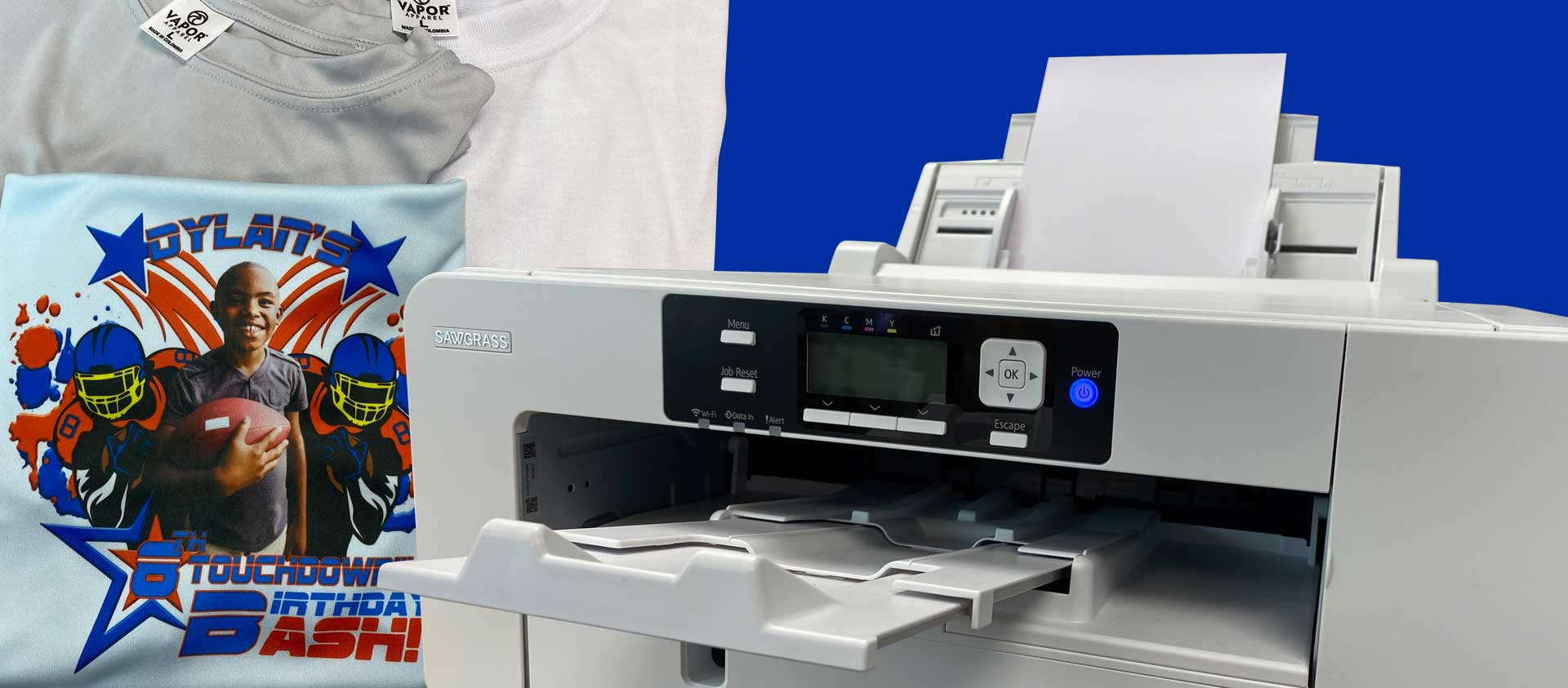The Ultimate Guide to Sublimation Printing for Custom-made Clothing
Wiki Article
Innovations in DTF Printing: Just How It's Reinventing the Sector
The textile printing sector is undertaking a substantial transformation, driven by the innovative developments in Direct-to-Film (DTF) modern technology. These technologies are not only boosting print quality and versatility however also simplifying the entire printing process. With premium ink formulas, improved movie and adhesive technologies, and the integration of automation, DTF printing uses lively, resilient prints on a variety of materials, meeting the enhancing need for modification. As organizations look for more environmentally friendly and effective services, the implications of these advancements require a closer assessment right into how they are forming the future of textile printing.Innovations in DTF Technology
Advancing rapidly, DTF (Direct-to-Film) printing innovation has actually gone through significant enhancements that are revolutionizing the textile sector. Modern DTF printers use sophisticated ink solutions that result in vivid, sturdy prints with high resolution and color precision.
Additionally, innovations in movie and adhesive innovations have actually boosted the overall application procedure. New movies provide better elasticity and adhesion, enhancing the toughness and washability of the published styles - screen printing. This guarantees that the prints maintain their honesty and vibrancy even after multiple cleans
Finally, ecological considerations have prompted the development of eco-friendly DTF options. Suppliers are increasingly embracing sustainable methods, such as utilizing water-based inks and recyclable films, straightening with worldwide initiatives to minimize the industry's eco-friendly impact.
Benefits Over Typical Approaches
When comparing DTF printing to traditional approaches such as screen printing and direct-to-garment (DTG) printing, numerous unique benefits arise. heat transfer vinyl printing. One of the most substantial benefits is its adaptability in material compatibility. Unlike display printing, which usually calls for details textile types, DTF printing can be used to a broader variety of products, consisting of cotton, polyester, and blends, without jeopardizing print qualityAn additional significant advantage is cost-effectiveness, specifically for small to medium-sized orders. Conventional display printing becomes economically feasible only at greater quantities due to the setup expenses entailed. In comparison, DTF printing gets rid of these arrangement expenditures, making it extra affordable for smaller sized sets and one-off layouts.
In addition, DTF printing succeeds in toughness and washability. In addition, DTF printing provides faster turn-around times.

Boosted Design Abilities
DTF printing uses improved design capabilities that establish it apart from traditional printing approaches. The procedure includes printing a layout onto an unique movie, which is after that transferred to material.In addition, DTF printing sustains a large selection of materials, consisting of cotton, polyester, blends, and also non-textile substratums. This flexibility opens up doors for innovative applications in varied industries such as fashion, home style, and promotional items. Unlike screen printing, which can be restricting as a result of color separation and stencil production, DTF printing streamlines the process, making multi-color and photo-realistic designs much more accessible.
Furthermore, DTF printing excels in accomplishing consistent color precision and vibrancy. This is essential for brand name uniformity and meeting consumer assumptions. The modern technology also sustains special results, such as glow-in-the-dark elements and metallic surfaces, further broadening imaginative possibilities. In essence, DTF printing equips developers to press the boundaries of imagination, supplying aesthetically spectacular outcomes that were formerly unattainable.
Expense and Time Effectiveness
Among the significant advantages of DTF printing hinges on its cost and time effectiveness, making it a preferred choice for several organizations. By removing the demand for display arrangements and comprehensive pre-production procedures, DTF printing significantly minimizes preliminary expenses. Unlike typical techniques that require significant investment in screens and configuration times, DTF printing allows for direct application onto various materials with very little prep work. This reduction in configuration time converts into faster manufacturing cycles, enabling visit the website businesses to meet orders more quickly.In addition, DTF printing excels in creating short runs and customized orders cost-effectively. The capability to generate top quality prints without the demand for large volume dedications lessens waste and enhances source appropriation. This flexibility is particularly useful for small companies and start-ups that might not have the capital to buy massive manufacturing runs.
In regards to operational effectiveness, DTF printing's streamlined operations enhances total efficiency. The technology's compatibility with a wide variety of fabrics and substrates better broadens its application range, reducing the requirement for numerous printing systems. Businesses can attain a faster turn-around time, enhancing customer satisfaction and competition in the market. Hence, DTF printing sticks out as a transformative service in the printing sector.
Future Trends in DTF Printing
Preparing for future fads in DTF printing discloses a landscape noted by rapid technological improvements and boosted market need (Branded clothing). One significant trend is the combination of fabricated knowledge (AI) and equipment learning algorithms to optimize print high quality and enhance procedures. AI-driven systems can forecast potential problems and readjust setups in real-time, ensuring constantly top quality outputAdditionally, advancements in environment-friendly inks and sustainable materials are anticipated to gain traction. As environmental issues end up being a lot more important, the market is most likely to see a shift towards eco-friendly and safe inks, lowering its ecological footprint.
Personalization and customization will certainly also play an essential function. With the expanding customer demand for distinct, individualized items, DTF printing technologies are developing to provide more elaborate and comprehensive customization options. This fad is supported by boosted software application services link that enable for more complex and creative layouts.
Last but not least, the combination of DTF printing with other digital platforms and shopping services will certainly end up being extra seamless. This connection will certainly enable services to use on-demand printing solutions directly to customers, better driving development in the sector. These trends collectively highlight a future where DTF printing not just meets yet exceeds the advancing needs of the market.
Verdict

When contrasting DTF printing to standard techniques such as screen printing and direct-to-garment (DTG) printing, numerous distinctive benefits arise. Unlike screen printing, which commonly needs details textile kinds, DTF printing can be used to a broader array of click to read more products, including cotton, polyester, and blends, without jeopardizing print quality.
DTF printing provides boosted design abilities that establish it apart from conventional printing techniques. Hence, DTF printing stands out as a transformative service in the printing sector.
Innovations in DTF printing substantially boost the textile printing sector by providing remarkable print effectiveness, adaptability, and top quality.
Report this wiki page